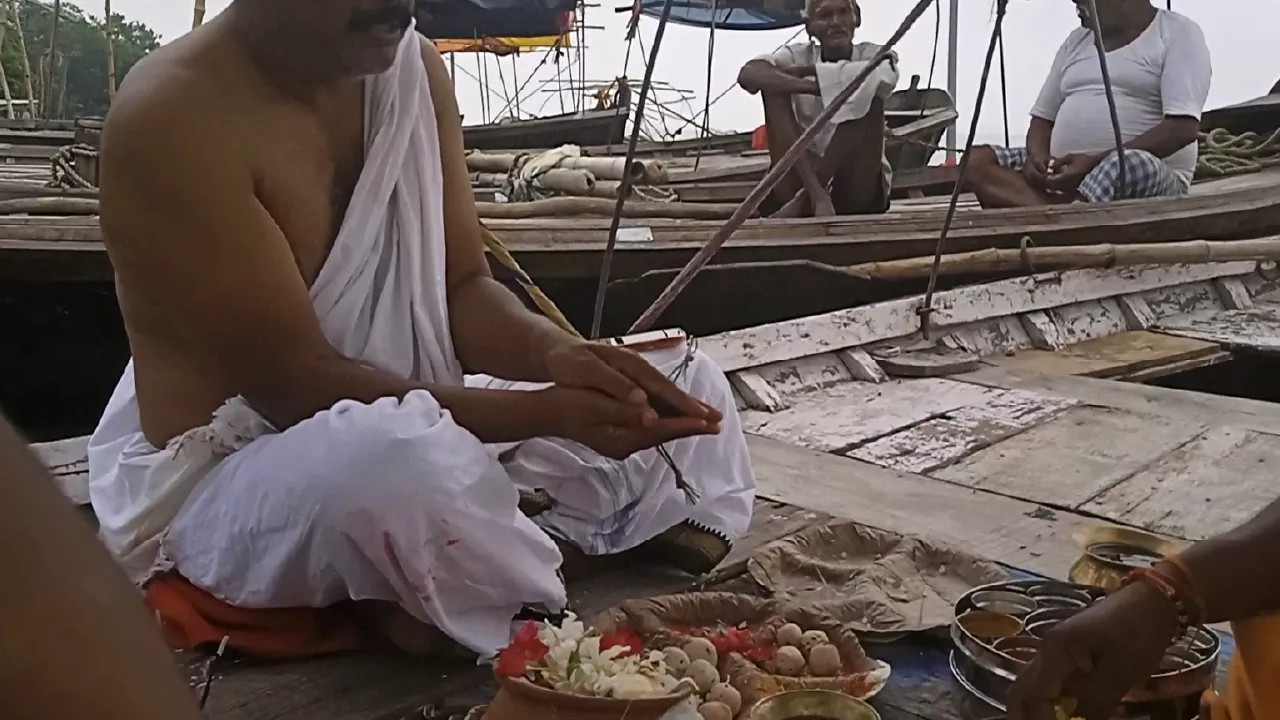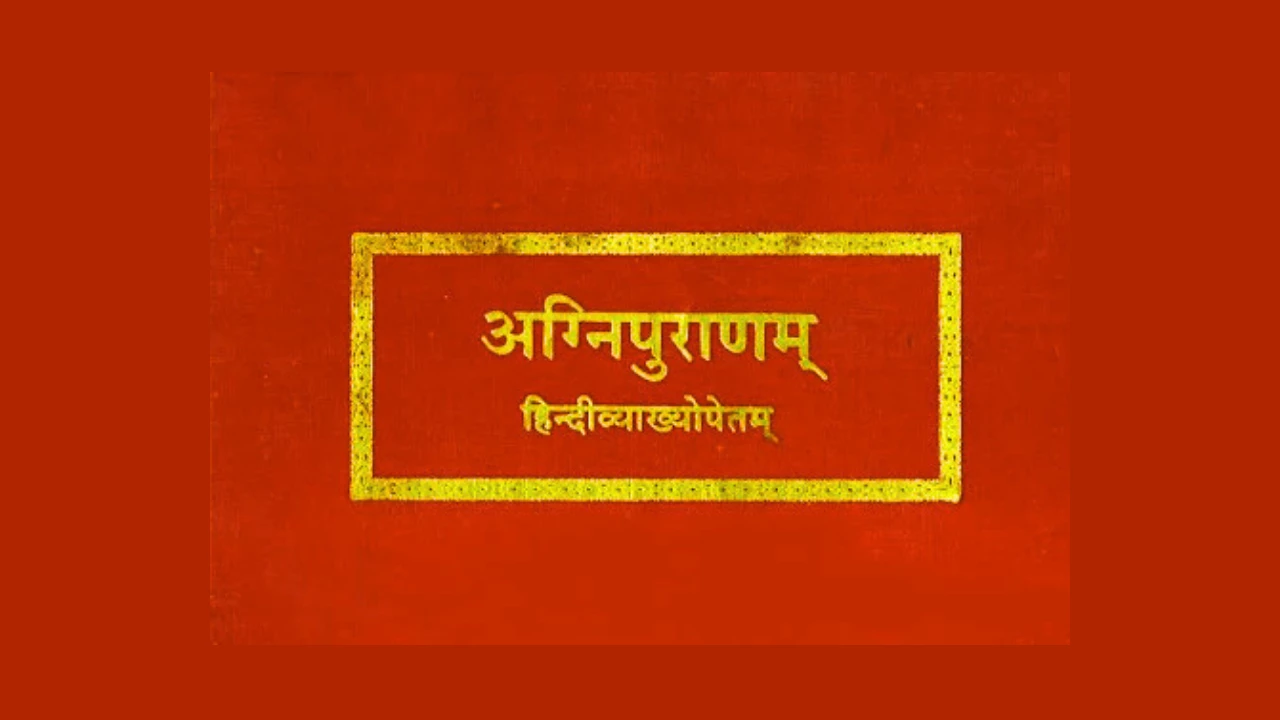Namaste,
Within the sacred continuum of Pitrupaksha, each tithi (lunar day) holds significance for performing Śrāddha for ancestors who passed away on that corresponding day. However, the Chaturdaśī (the 14th day of the dark fortnight, Kṛṣṇa Pakṣa) stands apart. While generally, Śrāddha might be paused or considered less suitable for ancestors who died naturally on this day (unless it was their specific tithi of death), our ancient seers, through texts like the profound Skanda Purāṇa, designated this day specifically for a particular group of souls – those whose life thread was unnaturally severed. Understanding and performing the Chaturdashi shradh for untimely death is an act of profound compassion and spiritual duty.
The Unique Significance of Chaturdashi Tithi in Pitrupaksha Observances

Why this specific day? The fourteen tithis leading up to the Amāvāsyā (New Moon) are generally windows for connecting with our ancestors. However, the Chaturdaśī carries a certain intensity. It is the day immediately preceding the Amāvāsyā, the darkest night, a time often associated with potent spiritual energies and, in some contexts, with beings or forces that exist outside the normal cycles.
Our scriptures, like the Agni Purāṇa, hint at this distinction. While recommending Śrāddha on most tithis, it sometimes notes exceptions or specific designations. The Skanda Purāṇa, however, is exceptionally clear, explicitly reserving the Chaturdaśī during Pitrupaksha for ancestors who met specific kinds of ends. This designation suggests that the spiritual energies of this day are uniquely suited to address the particular needs of souls who departed under distressing circumstances.
Understanding ‘Untimely Death’ (Apad Mṛtyu) in the Context of Shastras
What constitutes an ‘untimely’ or ‘unnatural’ death for which the Chaturdashi shradh for untimely death is prescribed? The term often used is Apad Mṛtyu (death by calamity or misfortune) or Durmaraṇa (inauspicious death). Our Puranas provide specific examples, ensuring clarity for descendants performing the rites. The Skanda Purāṇa, in particular, is quite detailed:
- Death by Weapons (Śastra-hata): Those killed in warfare, murder, accidents involving weapons, or any violent altercation.
- Premature Death (Akāla Mṛtyu): Dying young, significantly before the natural lifespan was expected to conclude, even if due to sudden illness.
- Supernatural Calamities or Accidents (Devakṛta): Death due to lightning strikes, floods, earthquakes, landslides, or other large-scale natural disasters often seen as having a divine or cosmic element.
- Poisoning (Viṣa): Whether accidental or intentional.
- Death by Fire (Agni-dagdha): Those who perished in fires.
- Drowning (Jala-magna): Death in water bodies.
- Animal Attacks: Including snakebites (sarpa-daṣṭa) or being mauled by tigers (vyāghra-hata) or gored by horned animals (śṛṅgi-hata).
- Falling from Heights (Prapāta): Accidental falls leading to death.
- Suicide (Ātma-hatyā): Various forms, including hanging (udbandhana-mṛta).
The Agni Purāṇa specifically echoes the designation of Chaturdaśī for those killed by weapons (śastrahatānāṃ). The Garuḍa Purāṇa also mentions the need for rites for those who committed suicide or died by poison or weapons, further emphasizing the shared concern across scriptures for such souls, even if the specific Chaturdaśī link is most explicit in the Skanda Purāṇa.
The Spiritual State of Souls After Violent Departures: Why Specific Rites Are Crucial
Why this special focus? Our scriptures teach that the manner of death significantly impacts the soul’s immediate transition. A natural death, ideally with consciousness focused on the Divine, allows for a smoother passage. However, a sudden, violent, or self-inflicted death often leaves the soul in a state of shock, confusion, intense attachment to the unfinished life, and possibly anger or fear.
- Attaining the Preta State: The Skanda Purāṇa explicitly mentions that individuals dying under such circumstances may attain the state of Preta. A Preta is often understood as a discarnate spirit, bound to the earthly realm, unable to proceed smoothly towards the Pitṛ Loka (realm of ancestors) or the next stage of its journey. They linger, potentially experiencing their own suffering and, in some cases, causing subtle disturbances for the living due to their unresolved state.
- Need for Targeted Rituals: The standard Śrāddha rites nourish and satisfy ancestors residing peacefully in the Pitṛ Loka. However, souls trapped in a Preta state, burdened by the trauma of their departure, may require more specific, potent rituals to help sever lingering attachments, soothe their distress, and provide the necessary spiritual momentum (gati) to move forward. The Chaturdashi shradh for untimely death is designed precisely for this purpose.
Scriptural Authority: Puranic Guidance on Chaturdashi Shradh for Untimely Death
The authority for performing this specific Śrāddha comes directly from our revered scriptures. Let’s revisit the key Puranic injunctions:
The Explicit Guidance of the Skanda Purana
The Skanda Purāṇa is arguably the most detailed source on this matter. It repeatedly emphasizes:
- Śrāddha on Chaturdaśī is specifically for those killed by weapons (śastreṇaiva hata ye ca teṣāṃ tatra pradiyate).
- It extends this to various forms of untimely death, including premature death and death by calamities (akālamṛtānāṃ ca tathā devakṛtena ca).
- It recommends the Ekoddiṣṭa Śrāddha (a rite focused on a single individual ancestor) on Chaturdaśī for such cases. This focus on the individual soul is logical given the specific trauma experienced.
- Crucially, it states that performing Śrāddha on this day for such ancestors brings them satisfaction (tṛpti) for the entire Pitrupaksha fortnight (pakṣaṃ yāvattu tiṣṭhati), highlighting its efficacy.
- It directly links these deaths to the potential Preta state and prescribes the Chaturdaśī rite for their redemption (pretatvaṃ yānti te narāḥ… teṣāṃ mokṣāya vai sadā).
Corroboration from the Agni Purana

The Agni Purāṇa, while discussing general Śrāddha rules, supports the Skanda Purāṇa‘s primary point by specifically mentioning that Chaturdaśī is generally avoided except for those killed by weapons (śastrahatānāṃ varjayitvā caturdaśīm). This exception reinforces the special designation of this tithi.
Chaturdashi Shradh: Insights from the Garuda Purana
The Garuḍa Purāṇa, known for its detailed descriptions of death, the afterlife, and associated rituals, adds further layers:
- It frequently discusses the plight of souls who die inauspiciously (durmaraṇa) and prescribes specific rites like Nārāyaṇa Bali to alleviate their suffering and prevent them from remaining in a Preta state. While Nārāyaṇa Bali is a separate, more elaborate rite often performed outside Pitrupaksha (sometimes suggested on the 11th day, Ekādaśī), its purpose aligns with the compassionate intent of the Chaturdaśī Śrāddha – addressing the specific needs arising from an unnatural death.
- It also advises offering Piṇḍa specifically to those who committed suicide or died by poison or weapons, acknowledging the necessity of targeted offerings for these categories, which overlaps directly with the Chaturdaśī focus.
Together, these Puranic sources paint a consistent picture: souls departing through violence, accident, or suicide require special attention, and the Chaturdaśī of Pitrupaksha is the divinely ordained time for providing this through specific Śrāddha rites.
Performing the Chaturdashi Shradh for Untimely Death: Key Ritualistic Elements
While the specific procedures can vary slightly based on family tradition (kula paramparā) and regional practices, the core elements of the Chaturdashi shradh for untimely death generally align with other Śrāddha practices but with a focused intention:
- Saṅkalpa (Sacred Intention): Before commencing, the kartā (performer, usually the eldest son or another qualified male relative) makes a formal declaration (saṅkalpa), clearly stating the purpose of the rite – performing Śrāddha on Chaturdaśī Tithi for the specific ancestor(s) who suffered apad mṛtyu or durmaraṇa, mentioning their names and lineage (Gotra). This focused intention is crucial.
- Āvāhana (Invocation): The specific ancestor(s) are invoked, invited to accept the offerings. Mantras are chanted, requesting their presence. Kuśa grass effigies might be used to represent them.
- Piṇḍa Dāna (Offering Rice Balls): One or more piṇḍas (balls made of cooked rice, barley flour, ghee, honey, black sesame seeds) are offered, specifically intended for the nourishment and satisfaction (tṛpti) of the invoked ancestor(s). This offering is central to the ritual, symbolizing the subtle body and providing sustenance.
- Tarpaṇa (Water Offering): Libations of water mixed with black sesame seeds (tilodaka) are offered, again naming the specific ancestor(s), to quench their spiritual thirst and offer solace.
- Feeding Virtuous Brahmins: Inviting one or more qualified, virtuous Brahmins to represent the ancestors and feeding them the specially prepared sacred food is a vital part. It is believed that the offerings made to the Brahmins reach the ancestors (pitṛs) in their realm. Dakshina (monetary or other offerings) is also given to the Brahmins.
- Śraddhā (Faith) and Compassion: Underlying all procedures is the paramount importance of śraddhā – unwavering faith in the efficacy of the rites and the scriptural injunctions. Equally important is the feeling of genuine compassion (karuṇā) and love (prema) for the departed soul, sincerely wishing for their peace and progress. It is this heartfelt intention that truly empowers the ritual.
Important Distinctions: Chaturdashi vs. Other Shraddha Days
It is important for families to understand the specific nature of the Chaturdaśī Śrāddha:
- Focus on Unnatural Death: This day during Pitrupaksha is primarily reserved for ancestors who died due to the specific reasons outlined earlier (weapons, accidents, suicide, etc.).
- Avoidance for Natural Death: Generally, one should not perform the regular Śrāddha for ancestors who died naturally (e.g., due to old age or normal illness) on the Chaturdaśī, unless that happened to be their specific lunar date (tithi) of death. If an ancestor died naturally on Chaturdaśī Tithi outside of Pitrupaksha, then their annual Śrāddha would indeed fall on this day during Pitrupaksha. However, the general rule during Pitrupaksha is to reserve the 14th day for those who suffered durmaraṇa. Consulting a knowledgeable family priest can clarify specific cases.
The Ultimate Aim: Peace, Progress, and Liberation for Ancestral Souls
Why undertake these specific rites? What is the ultimate goal of the Chaturdashi shradh for untimely death?
- Alleviating Suffering: The primary aim is to alleviate the suffering, confusion, and lingering earthly attachments of souls who experienced traumatic departures.
- Providing Gati (Momentum): The rituals are intended to provide the necessary spiritual energy and direction for the soul to move beyond the Preta state or any limbo state.
- Facilitating Journey to Pitṛ Loka: The offerings help the soul proceed towards the realm of ancestors (Pitṛ Loka) where they can rest more peacefully and await their future journey according to their karma.
- Ensuring Family Well-being: It is also believed that pacifying such potentially restless souls through proper rites ensures the peace and well-being of the living descendants, removing any subtle negative influences (pitṛ doṣa) that might arise from neglected ancestral duties, especially in cases of untimely death.
- Fulfilling Dharma: Ultimately, it is an act of fulfilling one’s sacred duty (dharma) towards one’s ancestors, expressing gratitude, love, and responsibility across generations.
Conclusion: Embracing Duty with Compassion and Understanding

The path laid out by our scriptures is one of profound wisdom and deep compassion. The designation of the Chaturdashi shradh for untimely death during Pitrupaksha is not a mere superstition but a carefully considered provision within our tradition to address the unique spiritual needs of those whose lives ended abruptly or violently.
By understanding the guidance of the Skanda Purāṇa, supported by insights from the Agni and Garuḍa Purāṇas, and performing these rites with faith (śraddhā) and heartfelt compassion (karuṇā), we extend a loving hand across the veil of existence. We fulfill our sacred duty, offering solace to troubled souls, aiding their journey towards peace, and ensuring the continued harmony and well-being of our lineage.
Let us approach this solemn observance not with fear, but with reverence and a deep sense of responsibility towards those who paved the way for us, especially those whose final journey on this earth was fraught with difficulty.
May the performance of these sacred rites bring peace to your ancestors and blessings upon your family.
शुभमस्तु! (Śubhamastu!)
